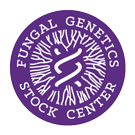Strain: Neurospora crassa
FGSC #3244
Reporting Genes: fs-6;pan-2
Species: crassa
Allele: 2351;Y153M96
Alternate Strain Number: F144
Mutagen: S
Depositor: OMM
Linkage Group: --;VIR
Mating Type: A
Genetic Background: M
ref1: Mylyk & Thelkeld 1972 NN19:21, https://doi.org/10.4148/1941-4765.1871
ref2: Mylyk & Thelkeld 1974 Genet Res 24:91-102, https://doi.org/10.1017/s001667230001510x
Genes
